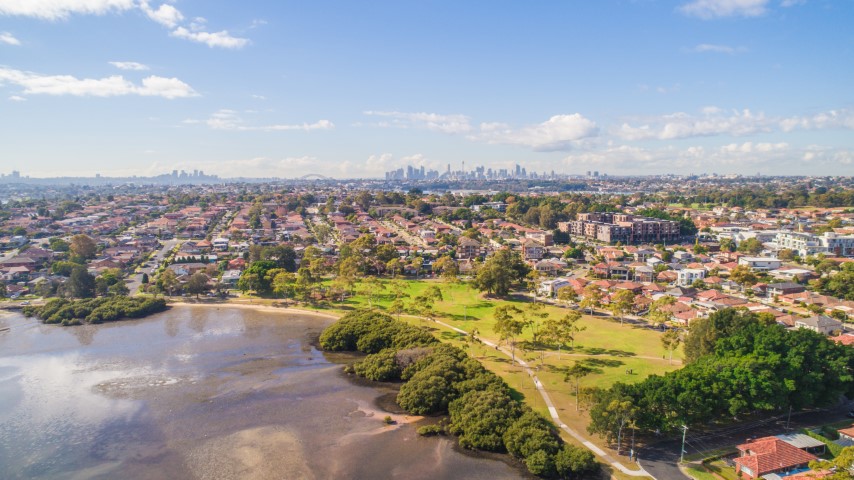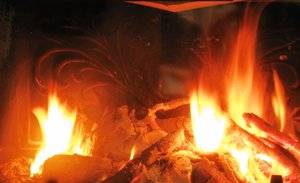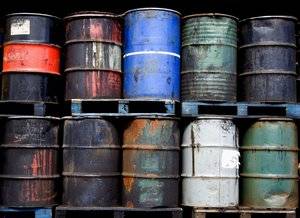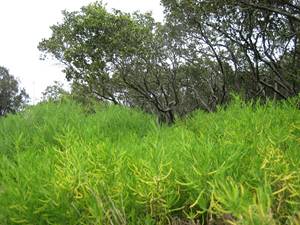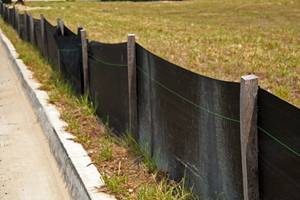Pollution & Contamination
Pollution and contamination
On this page you will find out about various forms of pollution and contaminants affecting the local environment. The drop down menus provide an overview of each pollutant and contaminant, the laws and policies in place to reduce their impact on the local environment, and procedures for lodging a complaint.
Overview
This page provides an overview of information about asbestos, health risks, legal requirements, and precautions when handling and disposing of asbestos. For complete and comprehensive information please refer to the documents listed in the ‘Further information’ section located at the bottom of the page.
About asbestos
Asbestos is a naturally-occurring fibrous silicate mineral once considered a versatile product because of its water resistance properties and ability to withstand heat, erosion, and decay.
Due to its versatility, asbestos was used to manufacture a range of home building materials up until the mid-1980s. If your house was built or renovated before 1987, it is likely you have asbestos in your home. Asbestos is most commonly found in drainage and flue pipes, roofing, guttering and flexible building boards (e.g. Villa board, Hardiflex, etc.), brakes, clutches and gaskets, under floor coverings such as carpets, linoleum and vinyl tiles, behind wall and floor tiles, in cement floors, internal and external walls, ceilings, eaves, garages, around hot water pipes, fences, extensions to homes and outdoor toilets to name a few.
It was not until 31 December 2003 that the use of asbestos products was officially banned in Australia.
How can asbestos affect my health?
Inhalation of asbestos fibres can lead to the development of diseases such as asbestosis, lung cancer, and mesothelioma. Studies indicate that people who have developed health problems from inhalation of asbestos fibres have usually been exposed to high levels of asbestos fibres over a prolonged period of time. The symptoms of these diseases do not normally develop until 20–30 years after their first exposure to asbestos.
When does asbestos pose a risk to health?
Small quantities of asbestos fibres are present in the air at all times. As levels are low, most people do not go on to develop asbestos related health problems. The health risks associated with asbestos are directly associated with its structural condition, most often referred to as either bonded or friable.
Bonded Asbestos: Is a term used to describe asbestos where its fibres remain firmly bound in cement. Where in a good condition it is harmless and best left alone.
Friable Asbestos: Is a term used to describe asbestos where the fibres are no longer bound within cement. Asbestos becomes friable and hence a health risk when it is damaged, cut, sanded, broken or mishandled.
How do I know if material in my house contains asbestos?
It is not possible to determine whether materials contain asbestos just by looking at it. For further information on testing, please go to the NSW EPA website.
Asbestos removal
Materials such as asbestos that are in good condition, not peeling or creating dust, or are sealed behind non-hazardous materials (e.g. new paint) are relatively safe. If the material is in good condition LEAVE IT ALONE. Disturbing or removing it unsafely can create a greater hazard.
A licensed asbestos removalist MUST be engaged for works involving:
- The removal of friable asbestos in any volume; or
- The removal of more than 10 square metres of bonded asbestos.
To find a list of licensed asbestos removalists within your area visit the NSW EPA website or contact 1800 Asbestos (1800 272 378).
Safety precautions
Removing asbestos is a dangerous and complicated process so it is always best to engage a licensed contractor, even for renovation works involving the removal of less than 10 square meters of bonded asbestos. Should, however you wish to undertake works yourself, it is important asbestos is removed, handled and disposed in a manner that does not pose undue risk to yourself, your family or neighbours.
For further information on asbestos safety in the home, please go to the EPA website.
Asbestos packaging and disposal
It is important to ensure asbestos is packaged correctly prior to disposal. The following outlines minimum requirements for packaging of asbestos waste:
- Keep the material wet until it is packaged
- Package material including off cuts in two layers of thick polythene sheeting, gently release any air and completely seal using adhesive tape
- Clearly label the packages as ‘ASBESTOS WASTE’ using a permanent marker
- Without delay transport asbestos waste to a waste disposal facility licensed to accept asbestos waste. For a list of waste management facilities licensed to accept asbestos waste please visit: NSW Environment Protection Authority.
Complaints
Should you have concerns regarding asbestos removal works, illegally dumped asbestos or a general asbestos enquiry please direct your enquiry as per the table below.
| Agency | Asbestos Related Complaint | Contact |
|---|---|---|
| SafeWork | Asbestos removal works being undertaken by a contractor. | Phone: 13 10 50 |
| City of Canada Bay |
Asbestos removal works being undertaken by a home owner. |
|
| Environment Protection Authority | Complaints regarding premises licensed under the NSW Protection of the Environment Operations Act 1997. | Phone: 131 555 |
Further information
- City of Canada Bay Asbestos Policy
- SafeWork - How to remove asbestos Code of Practice
- SafeWork - Asbestos Resources
- Environment Protection Authority - Dealing with household asbestos
- Environmental Protection Authority - Facilities that accept household asbestos
- Asbestos Awareness
- NSW Health - Asbestos and Health Risks
What is air pollution?
Air pollution is caused when an impurity such as smoke, dust, gas or odour is emitted into the air.
Air pollution can have a negative effect on both humans and the environment.
Sources of air pollution can include smoke from wood fire heaters, dust from construction sites or odours from spray painting.
Current air quality
The NSW Government provides up to date air quality results through the Regional Air Quality Index. Air quality results throughout NSW are generally satisfactory.
More information
Backyard burning causes air pollution and can have a major impact on neighbouring residents. Therefore, backyard burning of any material or substance (including vegetation and domestic waste) is prohibited within Canada Bay.
On the spot fines can be issued. BBQs are allowed, but must not cause a nuisance to neighbouring residents. Dry seasoned wood and/or natural or liquid petroleum gas should be used as fuel.
If you have excess vegetation or domestic waste which does not fit into your regular waste bins, City of Canada Bay offers kerbside clean ups. To check scheduled clean up dates for your property visit the Waste and Recycling Website or phone the Waste Hotline on 1300 551 659.
To lodge an enquiry or complaint contact Council by:
Wood smoke has been recognised as a large contributor to air pollution resulting in the release of noxious gases and fine particles potentially harmful to the environment and human health.
Correct operation of wood fire heaters
Poorly operated wood fire heaters can cause significant air pollution and health problems for neighbouring residents. However when operated correctly, excessive smoke emission can be reduced. Here are some important guidelines:
- Only burn seasoned dry hardwood
- Store your wood in a dry ventilated area
- Never burn damp wood, rubbish, driftwood, softwoods or painted or treated timber
- Ensure there is sufficient air circulation within the heater
- Do not allow the wood heater to smoulder overnight
- Regularly maintain the chimney
- Only purchase a wood fire heater if it has met the Australian Standard
- Professionally clean your wood heater and flue every year
Making a complaint about a wood smoke
Wood fire heaters create smoke, however a wood fire heater should only emit continuous smoke when it is first lit. If a wood fire heater is causing continuous smoke for longer than twenty (20) minutes, it is likely that there is a problem with the way the heater is being operated.
Where you believe a wood fire heater is being incorrectly operated, you should first speak with your neighbour about the issue. If the problem is not resolved, lodge a complaint with Council by:
More information
Water pollution is the release or placement of any matter, whether solid, liquid or gaseous, into local waterways either directly or through the stormwater system. Preventing water pollution is important as the City of Canada Bay is surrounded by natural waterways, which would be adversely affected by water pollution. Common sources of water pollution include litter, construction sites, paint, oil, chemicals and sewerage. On this page you will find ways to prevent water pollution around the home and construction sites and how to report water pollution if you see it.
Ways to prevent water pollution around the home
- Pick up rubbish around your property and on the street, place this rubbish in the correct bin
- Throw cigarette butts in the bin
- Repair leaks from vehicles such as oil and petrol on the grass
- Wash paint brushes out on the grass or in a sink connected to sewer
- Wash your vehicle on the grass and not the road
- Use small amounts of fertiliser and chemicals on your garden so that it does not run off in wet weather
Ways to prevent water pollution on a construction site
- Ensure that erosion and sediment controls are appropriate and are in place before starting work
- Maintain a stabilised access point
- Stockpiles of sand, soil etc are to be located away from stormwater depressions and drains
- Sediment laden water must go through an appropriate filtration / settling out system before being discharged into the stormwater system
- Reduce vehicle movement on wet days
- Any accidental spills should be cleaned up immediately
Reporting water pollution to Council
City of Canada Bay is taking action against pollution and heavy penalties apply if you are caught causing water pollution. Penalties include on-the-spot fines up to $8000 or further penalties if the matter goes to court.
Lodge an enquiry or complaint with Council if you see water pollution occurring or you are in doubt whether something may cause water pollution by:
For sewer overflows from private mains, please contact Council. If sewer overflow is occurring from a Sydney Water Sewer Main, please contact Sydney Water on 132 090. Leaking water mains can also be reported to this number.
More information and related links
Contaminated land is a significant issue for highly urbanised environments. It can threaten the health of humans, animals, plants and waterways and the effects can be either immediate or long term. Soil contaminants can last for many decades if they leach into groundwater and waterways.
Contaminated sites may occur anywhere, however they are typically clustered in areas which have been used for heavy industry or chemically intensive agriculture. Contamination can also be caused by accidental chemical spillage, inappropriate waste disposal, leaking plant or industry and pesticides and herbicides.
Some of the City's foreshore sites may be contaminated as a result of previous and existing land uses. Many foreshore areas used contaminated industrial fills such as coke and ash from power stations, industrial or domestic waste.
Managing Contaminated Land
The City of Canada Bay shares responsibility for contaminated land management with the NSW Environment Protection Authority (EPA) and the Department of Planning (DoP).
Sites that pose a 'significant risk of harm' to human health and the environment as defined by the Contaminated Land Management Act 1997 are regulated by the EPA.
Other potentially contaminated sites within the City of Canada Bay are managed by Council through planning and development controls specified under the Environmental Planning and Assessment Act 1979. The Act precludes Council from granting development consent for potentially contaminated sites, until Council is satisfied the site is suitable in its present state or is able to be made suitable for the proposed use.
The remediation of contaminated land is facilitated and regulated through State Environmental Planning Policy (Resilience and Hazards) 2021 Chapter 4 and Council's Contaminated Land Policy. Council's Contaminated Land Policy integrates contaminated land management into the planning and development process. The policy:
- ensures that changes of land use will not increase the risk to health or the environment
- ensures inappropriate restrictions on land use are avoided
- provides information to support decision making
- informs the community.
It also contains information relating to phase I and II investigation, validation reports, Remedial Action Plans and Site Audit Statements (SAS).
More information
What are acid sulfate soils?
Acid sulfate soils are widespread along the the NSW coast, in estuarine floodplains and coastal lowlands, including urban areas, farmland, mangrove tidal flats, salt marshes and tea-tree swamps. These soils include those that are producing acid (actual acid sulfate soils) and those that could become acid producing (potential acid sulfate soils).
Potential acid sulfate soils are naturally occurring soils containing iron sulfides (pyrite). They become actual acid sulfate soils when they are dried, usually because of human activity, and the pyrite is exposed to air. In air, pyrite is oxidised, resulting in production of sulfuric acid.
Why is acid sulfate soil a problem?
Left undisturbed, acid sulfate soils are harmless, but when excavated or drained, the sulfides within the soil react with the oxygen in the air, forming sulfuric acid. This acid, together with associated toxic elements (heavy metals and other contaminants), can kill plants and animals, contaminate drinking water and food such as oysters, and corrode concrete and steel.
When do acid sulfate soils become an issue?
Acid sulfate soils need to be considered when proposing a development in an area identified on the acid sulfate soil maps. The acid sulfate soil maps have been created by the NSW Government and identifies areas throughout NSW that may contain acid sulfate soils. The maps can be viewed in City of Canada Bay’s Local Environment Plan.
City of Canada Bay’s Local Environment Plan requires development consent for any works identified in the table below on land identified on the acid sulfate soil planning map.
| Class of land as shown on the acid sulfate soils planning maps | Works |
|---|---|
|
1 |
Any works |
|
2 |
Works below the natural ground surface.
Works by which the watertable is likely to be lowered. |
|
3 |
Works more than 1 metre below the natural ground surface.
Works by which the watertable is likely to be lowered more than 1 metre below the natural ground surface. |
|
4 |
Works more than 2 metres below the natural ground surface. Works by which the watertable is likely to be lowered more than 2 metres below the natural ground surface. |
|
5 |
Works within 500 metres of adjacent Class 1, 2, 3 or 4 land that is below 5 metres Australian Height Datum by which the watertable is likely to be lowered below 1 metre Australian Height Datum on adjacent Class 1, 2, 3 or 4 land. |
What is required?
You will be required to engage a suitably qualified person to undertake a preliminary assessment of the land to determine whether acid sulfate soils are present and whether the proposed works will require an acid sulfate soil management plan.
More information
Please view Council's Acid Sulfate Soils Fact Sheet or contact City of Canada Bay’s duty planner who will be able to advise you whether or not you require a preliminary assessment or management plan for your proposal.
Related links
The City of Canada Bay is home to extensive waterfront areas. While we are able to enjoy our beautiful foreshores, we also have a responsibility to ensure they are kept clean and unpolluted and that we protect habitats of native flora and fauna living there. Dirty waterways reduce the aesthetic beauty of our waterways and harm wildlife.
Loose soil and sediment from construction sites can easily be blown and/or washed off the actual construction site and end up in stormwater systems, creeks and rivers. Increasing amounts of sediment in our waterways from construction sites not managing their erosion and sediment control (ESC) practices properly is decreasing the quality of our waterways and harming local flora and fauna. Our compliance officers, who regularly monitor the ESC practices of local construction sites, aim to reduce the amount of sediment leaving those sites to improve the overall health of our water systems.
CONTACTING THE ENVIRONMENTAL HEALTH TEAM
For further information regarding any of the information contained within this section, please contact Council's Environmental Health Team Monday to Friday via email or on 9911 6555.
What does sediment do to our waterways?
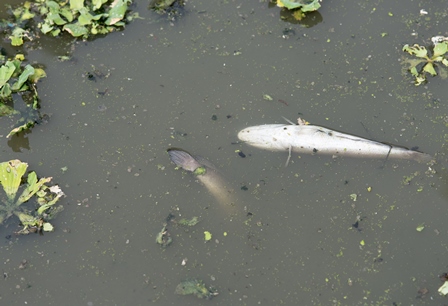
Sediment and other runoff from land clearing and construction activities can decrease the amount of sunlight able to penetrate to the bottom of our creeks and rivers. This makes it difficult for plants and seagrass on the bottom of the river beds to grow and can make it more difficult for fish and other aquatic life to see and hunt food essential for survival. Sediment can also smother aquatic environments and finds its way into the gills of fish and other aquatic animals where it can make them suffocate due to their inability to absorb the oxygen they need.
Within a built environment, sediment can block drains and waterways, increasing the likelihood of flooding. Pollutants and chemicals often found within runoff can also make the water toxic and dirty for wildlife and unsafe for humans to swim in, reducing the enjoyment of these natural resources.
What Council is doing to prevent this and what you can do to help?
The City of Canada Bay and the NSW Environment Protection Authority undertake inspections of construction sites ranging in size from individual house constructions to large scale developments. During these inspections, they are examining whether appropriate erosion and sediment controls have been put in place and whether or not they are being properly maintained to ensure their ongoing effectiveness.
If an individual or company is found to be polluting waterways or the stormwater system they can be liable for fines of up to $8000 per pollution incident.
HOW CAN YOU HELP?
- If you are clearing vegetation and exposing soil, make sure no sediment finds its way to our waterways.
- Before starting a construction project, ensure you know what needs to be in place for erosion and sediment control and implement these controls before any clearing is done.
- If you or anybody you know sees something that does not look right or you notice sediment leaving a construction site, please report this to Council (details below).
Our Living River
The Parramatta River Catchment Group has joined forces with 11 Councils that border the Parramatta River to make the Parramatta River swimmable again by 2025. This is being achieved through a series of campaigns targeting proper erosion and sediment control in construction sites and preventing pollution of the river generally. For more information about what this group is doing, visit the Our Living River website.
REPORTING ESC CONCERNS TO COUNCIL
If you or somebody you know see sediment, dirty water or other contaminants leaving a construction site please let Council know by contacting us using one of the alternatives below:
- Post: Locked Bag 1470, Drummoyne NSW 1470
- Phone
- Online
- In Person: Canada Bay Civic Centre 1A Marlborough Street, Drummoyne Mon-Fri 8:30am-4pm
Erosion and Sediment Control on Construction Sites
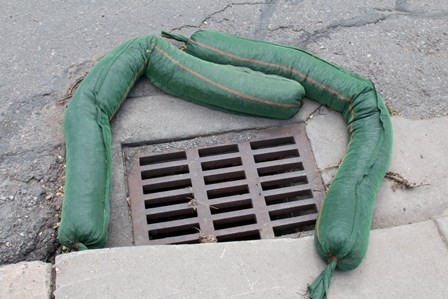
Anybody disturbing soil and/or clearing vegetation has a responsibility to prevent soil and other contaminants being eroded, leaving the construction site and ending up in our water systems. The controls will vary depending on how large the construction area is, for example, they could range from a sediment fence and some sandbags for a small site to large-scale sediment basins and stabilised drainage systems for large construction projects. The planning stage of a construction project, no matter how small or big, should include plans for how ESC is to be managed on the site until works are complete and the area has been re-vegetated or stabilised in another way (e.g. cement).
Erosion and sediment controls must be kept in place until a minimum of 70% of a construction site has been stabilised through vegetation or other means.
Some suggested erosion and sediment controls for a ‘typical’ development site are:
- Minimise the area to be cleared and leave as much vegetation as possible.
- Install temporary fences to define ‘no go’ areas that are not to be disturbed. Install sediment fence(s) along the low side of the site before work begins.
- Divert water around the work site and stabilise channels, but ensure that you do not flood the neighbouring property.
- Establish a stabilised entry/exit point. Clearly mark the access point and give an access map that has a delivery point indicated for all supplies.
- Leave or lay a kerbside strip (for example, the nature strip) to slow the speed of water flows and to trap sediment.
- Check the erosion and sediment controls every day and keep them in good working condition.
- Stockpile topsoil within the sediment controlled zone.
- Always be aware of the weather forecast.
- Stabilise exposed earth banks (e.g. vegetation, erosion control mats).
- Fill in and compact all trenches immediately after services have been laid.
- Install site waste receptacles (mini-skip, bins, wind-proof litter receptors).
- Sweep the road and footpath every day and put soil behind the sediment controls. Hosing down roads and footpaths is unacceptable.
- Connect downpipes from the guttering to the stormwater drain as soon as the roof is installed.
- Revegetate the site as soon as possible. The erosion and sediment control devices must be kept in place until 70% of the site has been revegetated.
For further information on correct erosion and sediment control and what your responsibilities are please refer to Managing Urban Water: Soils and Construction (The Blue Book) and the other publications by the NSW Office of Environment and Heritage.
More information
Service stations are a major contributor to air pollution across Australia. When large underground petrol storage tanks and car petrol tanks at service stations are refilled with petrol, vapours from the air in the empty tank are displaced. If nothing is done to capture them they enter into the atmosphere. These vapours contribute to local and regional air pollution from Volatile Organic Carbons (VOCs) such as benzene, xylene and toluene, which may impact on human health.
The NSW Protection of the Environment Operations (Clean Air) Regulation 2010 introduced a staged roll-out program for service stations to implement specific controls to capture their vapours and minimise their VOC emissions through vapour recovery (VR). The program aims to reduce the amount of VOCs released into the atmosphere and improve air quality in NSW.
There are two stages targeted for capturing the VOCs at service stations:
- When the underground storage tanks are being refilled; and
- When individual vehicles are filling their own, smaller tanks.
Emission capture for underground storage tanks is referred to as VR1 and emission capture at the bowser is referred to as VR2.
From 31 January 2017, responsibility for monitoring service stations and their VR systems was passed from the state government to relevant local government authorities. Our role at the City of Canada Bay is to work with businesses and individuals to provide education and enforcement on the requirements of the Protection of the Environment Operations (Clean Air) Regulation 2010 and the associated guidelines.
VR1 vs VR2
The first stage of vapour recovery or VR1 is when displaced vapours are collected from underground petrol storage tanks during the refilling process. As petrol is pumped into the tank, the vapours are taken back into the truck through a separate pipe (see diagram) and taken back to the refinery for processing.
The second stage of vapour recovery or VR2 is at the bowser when individual vehicle fuel tanks are being filled. The nozzle at a petrol service station fitted with a VR2 system has two components and while one part is delivering petrol from the underground storage tank, the other component is capturing the majority of the displaced vapours, returning them to the storage tank where they will be collected again during the VR1 process (see diagram).
For more information about the differences between VR1 and VR2 see the factsheets provided on the EPA website.
Images courtesy of NSW EPA
Where is vapour recovery required?
The Protection of the Environment Operations (Clean Air) Regulation 2010 identifies the zoning within the Greater Metropolitan Area of NSW where the different levels of vapour recovery are required (see Map). The City of Canada Bay Council area is within the Yellow VR Region, meaning that VR1 is required at all service stations and VR2 systems are required in all service stations that have been built or modified since 2009 or that supply more than 3.5 million litres of petrol per year.
Images courtesy of NSW EPA
Why vapour recovery?
Petrol vapours contain Volatile Organic Compounds (VOCs) including benzene, xylene and toluene. When VOCs are released into the air and heated up by the sun they contribute to increased ozone pollution in the atmosphere, commonly referred to as smog. This pollution can have a large impact on human health, especially for those with pre-existing respiratory conditions. An increase in the ozone levels of the atmosphere also has an impact on the atmosphere by contributing to the effects of global warming.
Over the last 20 years, vapour recovery systems that capture as much of this vapour as possible before it vents into the atmosphere have been successfully introduced across the United States, Europe and in many parts of Asia to reduce air pollution from petrol service stations.
Within Australia, other states now require some vapour recovery systems (particularly for the underground storage tanks being refilled) to be installed for new petrol stations. NSW is the only state in Australia that has brought in the requirement for all service stations within the Greater Metropolitan Area to retrospectively install VR1 systems for the underground storage tanks and in the more populated areas, VR2 systems at the bowser when individual vehicles are being refuelled.
It is a requirement that any service station operating a VR2 system, provides signage at the bowser informing the user the VR2 technology is in use. Have a look out for this the next time you are refuelling your vehicle.
For more information about why vapour recovery has been implemented in NSW, see the EPA website.
Council’s role
It is the role of the City of Canada Bay’s Environmental Health Team to undertake routine inspections and ensure that service stations are complying with the Protection of the Environment Operations (Clean Air) Regulation 2010.
FURTHER INFORMATION
If you or somebody you know believes a service station is emitting too much fume and vapour please let Council know by contacting us using one of the alternatives below:

